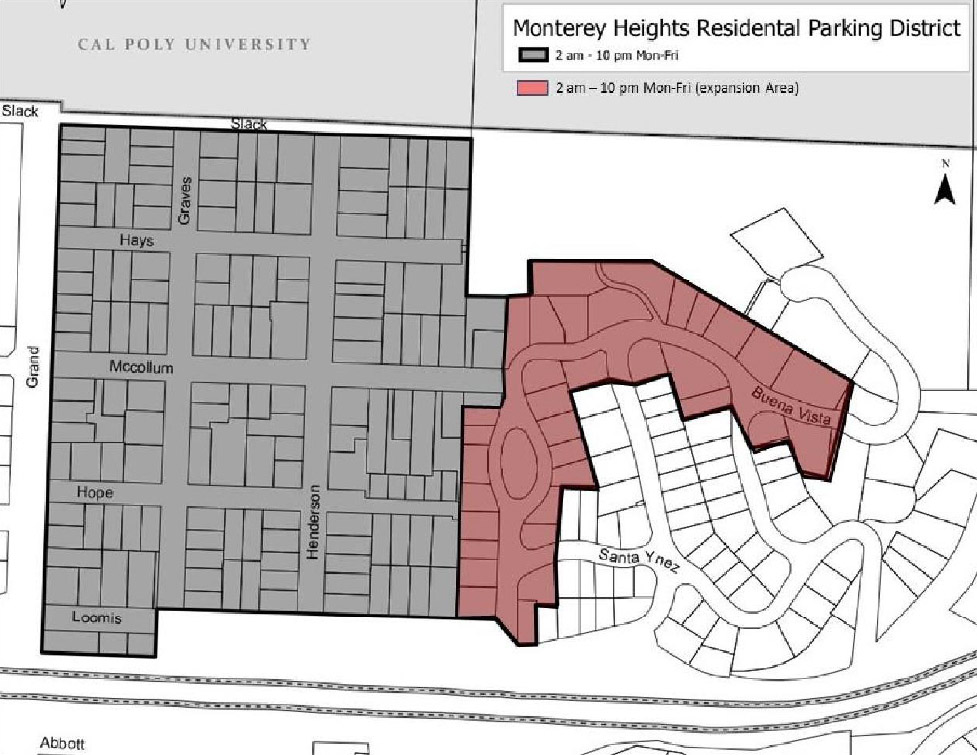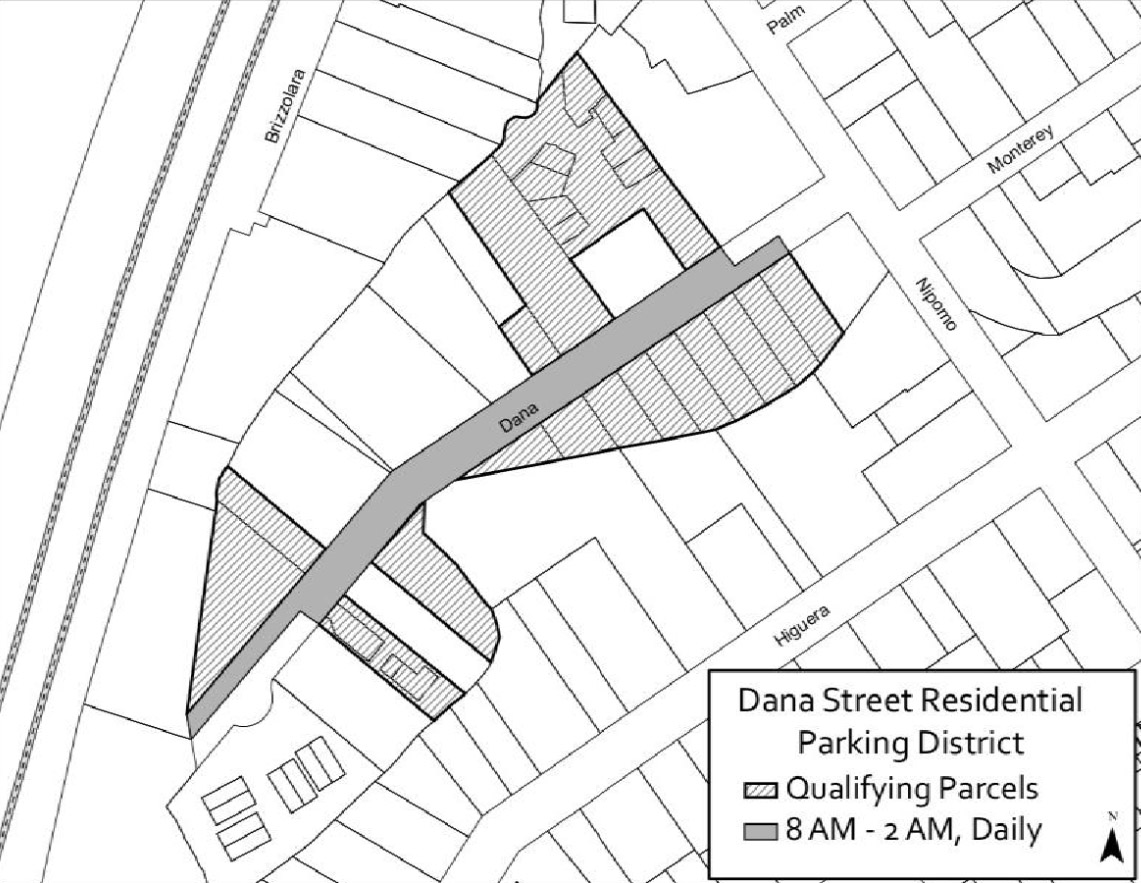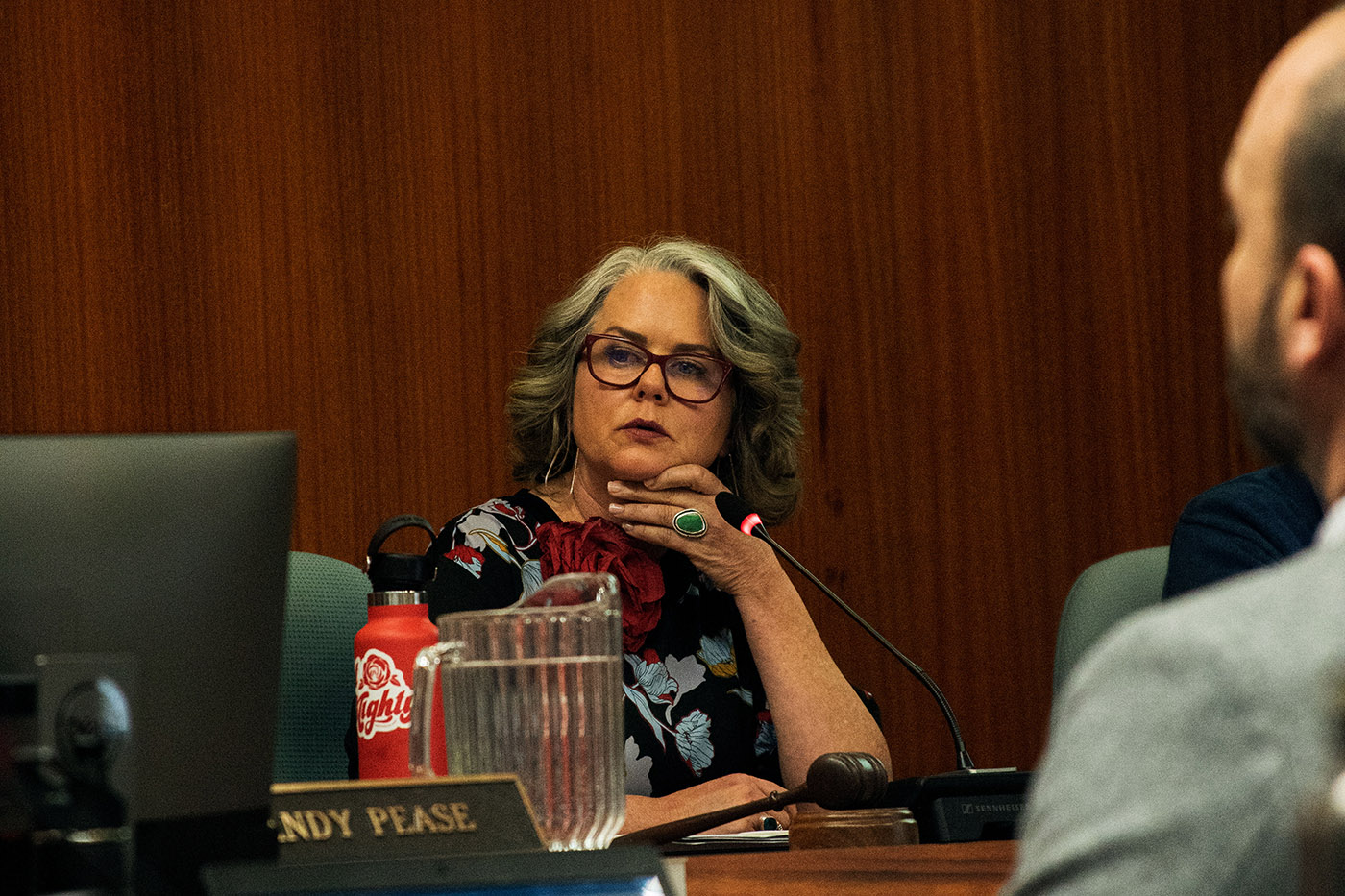More residential areas near campus and downtown will now require parking permits for street parking.
San Luis Obispo City Council unanimously voted to expand the Monterey Heights Residential Parking District and to create the Dana Street Residential Parking District Tuesday night.
Before enforcement starts, the city will issue permits to residents and install signs with the new restrictions, SLO Parking Services Supervisor Alexander Fuch said. The implementation timeline is currently unknown.

Expanding the Monterey Heights Residential Parking District
The Monterey Residential Parking District borders Cal Poly, extending north to south from Slack Street to Loomis Street, and east to west from Grand Avenue to the end of McCollum Street, according to council documents.
The city will expand the district to include residential properties on the 10 to 400 blocks of Buena Vista Ave, according to Fuchs.
To park in the district, drivers must display a parking permit Monday through Friday from 2 a.m. to 10 p.m.
Residents of the parking district can purchase a year-long parking permit for $15, and each household is allowed to purchase two permits. Non-residents cannot purchase a parking permit, according to the City of San Luis Obispo Parking Services.
In 2017, several residents requested to expand the Monterey Heights Residential Parking Permit District, but there was not enough support to present the idea to the city council, according to agenda documents.
In spring 2019, residents again requested to expand the district because a significant amount of non-residents, primarily Cal Poly students, were parking in the area, according to agenda documents.
“We have been dealing with students parking on our street, leaving their cars for weeks at a time,” San Luis Obispo resident Sarah Brown said.
In the last five to six years, Brown has noticed an increase of non-residents parking on Buena Vista Avenue. When Cal Poly built new dorms and stopped allowing freshman students to park on campus, students started parking their cars in her neighborhood, she said.
After the city surveyed 29 households in the area last year, 76 percent of respondents supported expanding the parking district.
About seven Cal Poly students, including Associated Students, Inc. (ASI) board of directors members, attended the meeting to discourage the expansion of the parking district because it disproportionally impacts students, ASI External Affairs Committee Chair Kylie Clark said.
“Most families will own one or two cars where many student households hold up to five cars. While this is unfortunate especially environmentally, whether or not these districts are in place, students are going to bring their cars to SLO,” Clark said. “These districts are a band-aid solution which doesn’t lessen the number of cars in the city, but rather redistribute them throughout the city.”
Clark suggested the city should instead improve the bus system and create more protected bike paths to encourage alternative forms of transportation.
Councilmember Carlyn Christianson said the problem lies in the number of students that live in houses near campus.
“If you’re renting a four bedroom house and there’s eight kids who live there and they each bring a car, that’s just not going to work,” Christianson said.
To solve the problem, Christianson said landlords should rent to a reasonable amount of tenants so there’s enough onsite parking for them.
“These [district requests] are started by residents, and when they have a large majority of folks who support something, I believe in supporting it,” Christianson said.

Creating the Dana Street Residential Parking Permit District
Formerly, anyone could park for free on Dana Street. However, a city study found a significant amount of non-residents were parking in the area, especially for employees working in downtown San Luis Obispo.
The Dana Street Residential Parking Permit District will include the 400 to 500 blocks of Dana Street.
To encourage business downtown, the Dana Street District will allow two hours of free parking each day, according to Fuchs.
Only residential units in the district are eligible to purchase parking permits, which is a building with one address that has four units or less, according to Fuchs. This means that residents of apartments or condominiums in the area would not be allowed to purchase a parking permit.
During public comment at the council meeting, some residents proposed the city modify parking permit guidelines so residents of apartments and condominiums can purchase a permit if they need.
The council voted to add the Dana Street Residential Parking Permit District without modifications, but will have a study session in the future to explore ways to include apartments and condominiums in the district.

